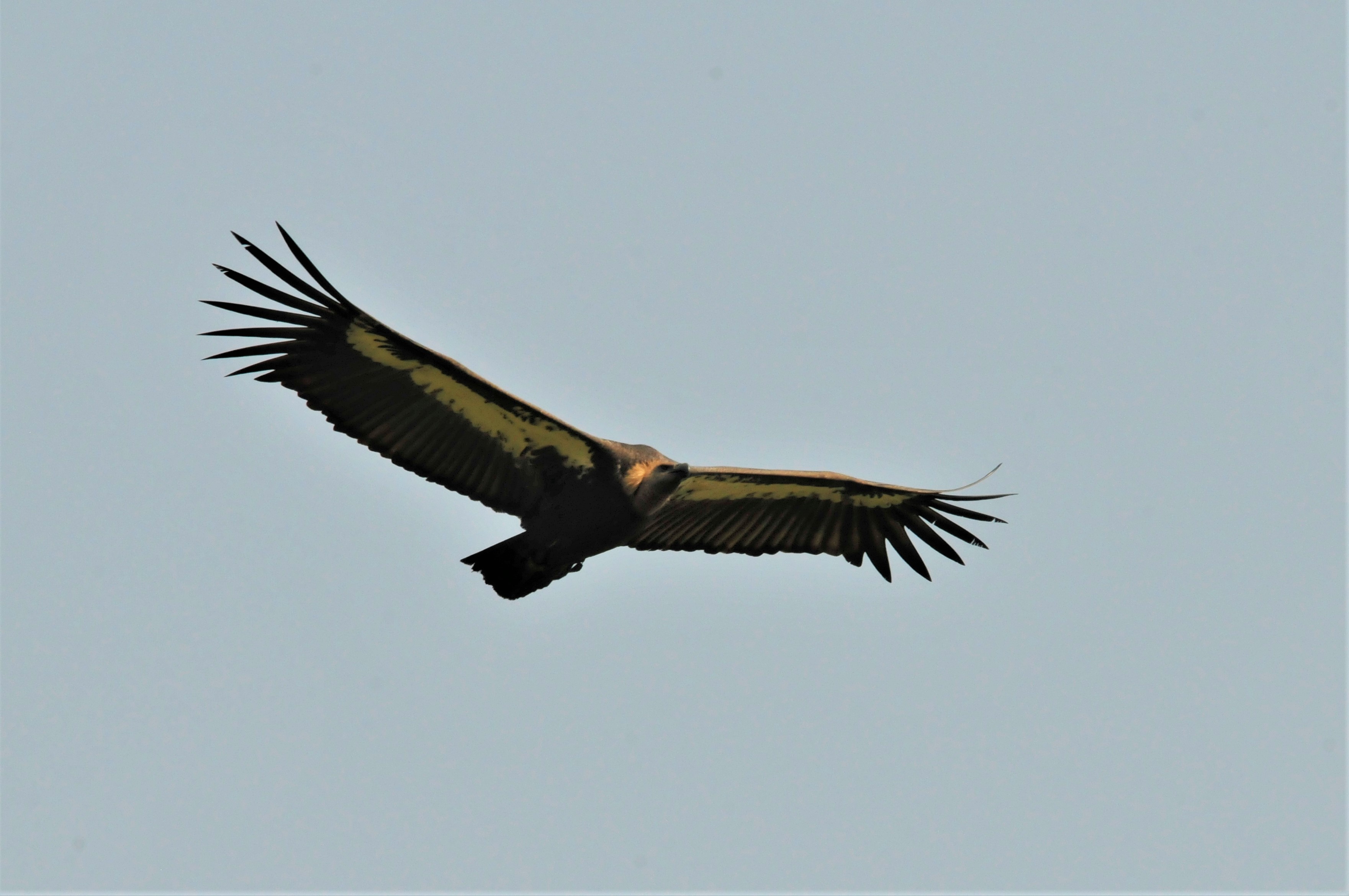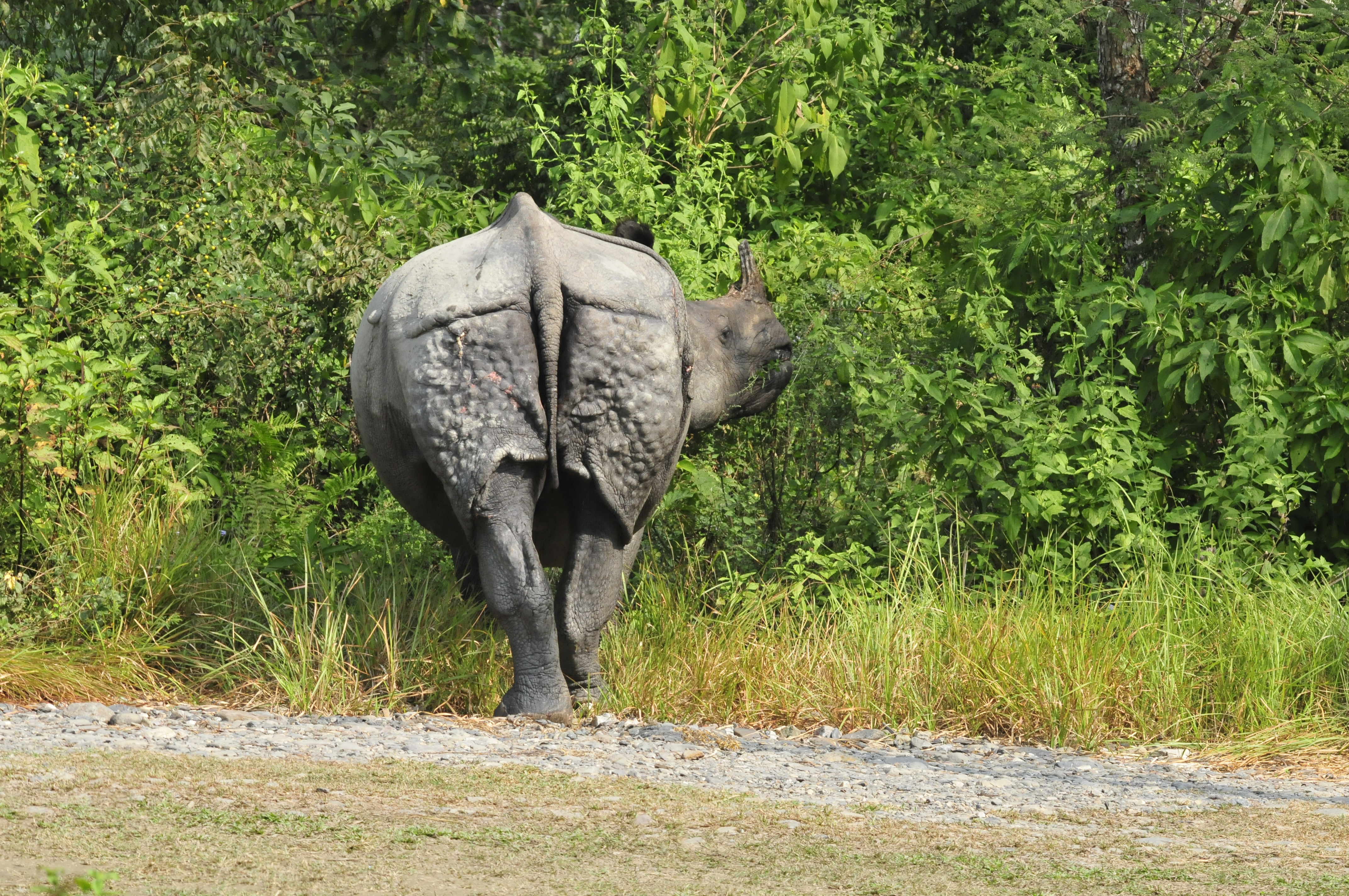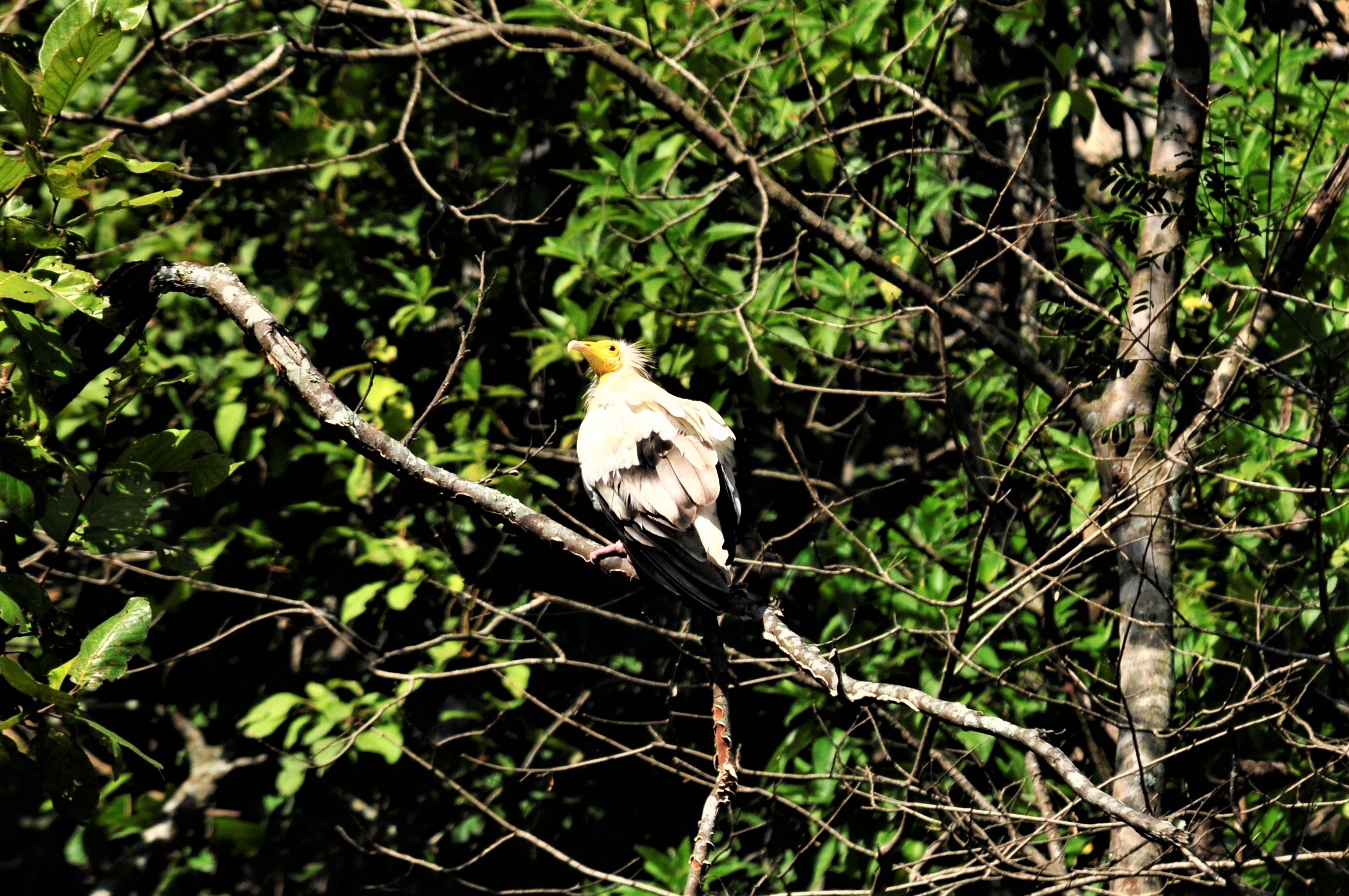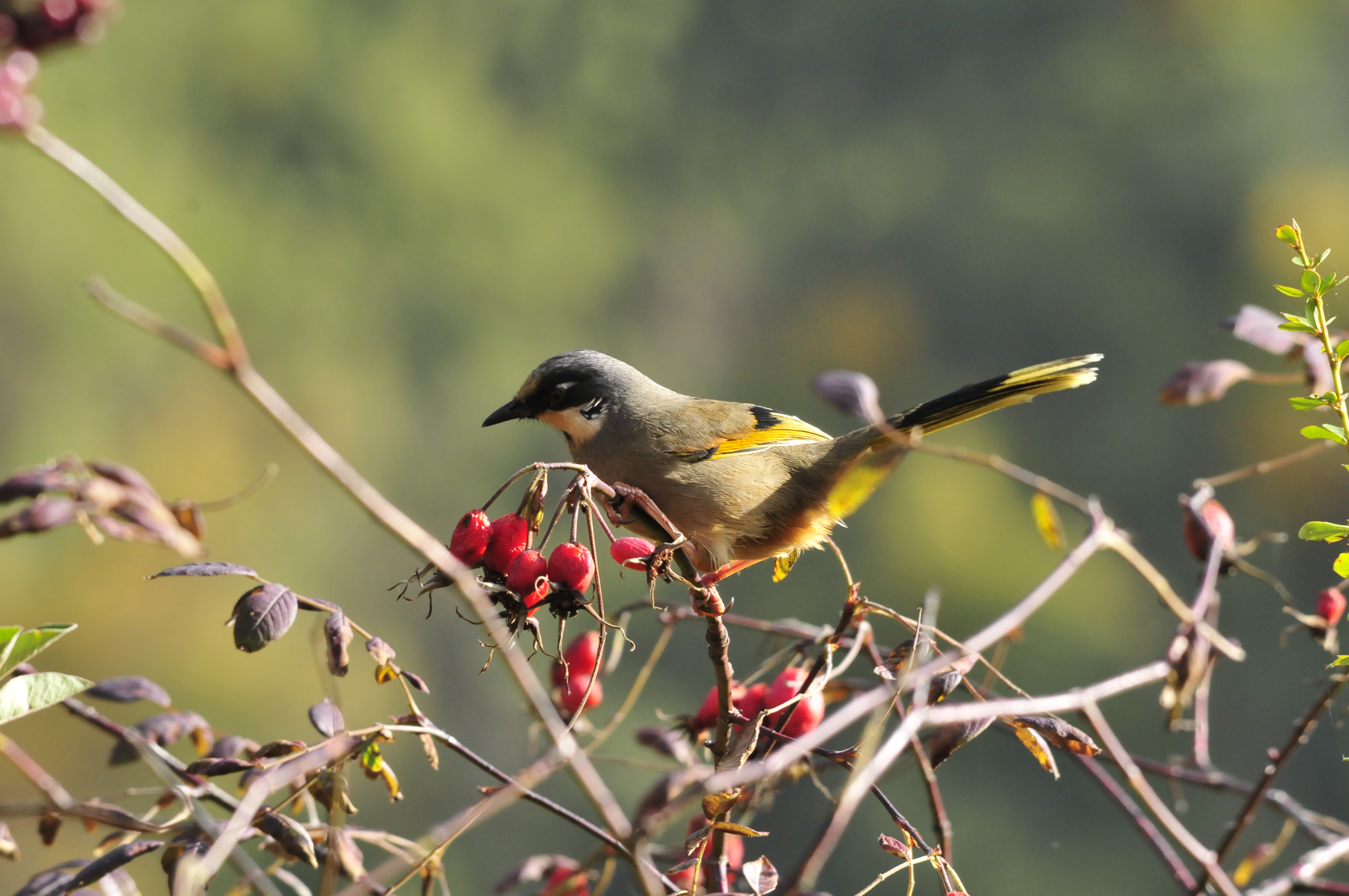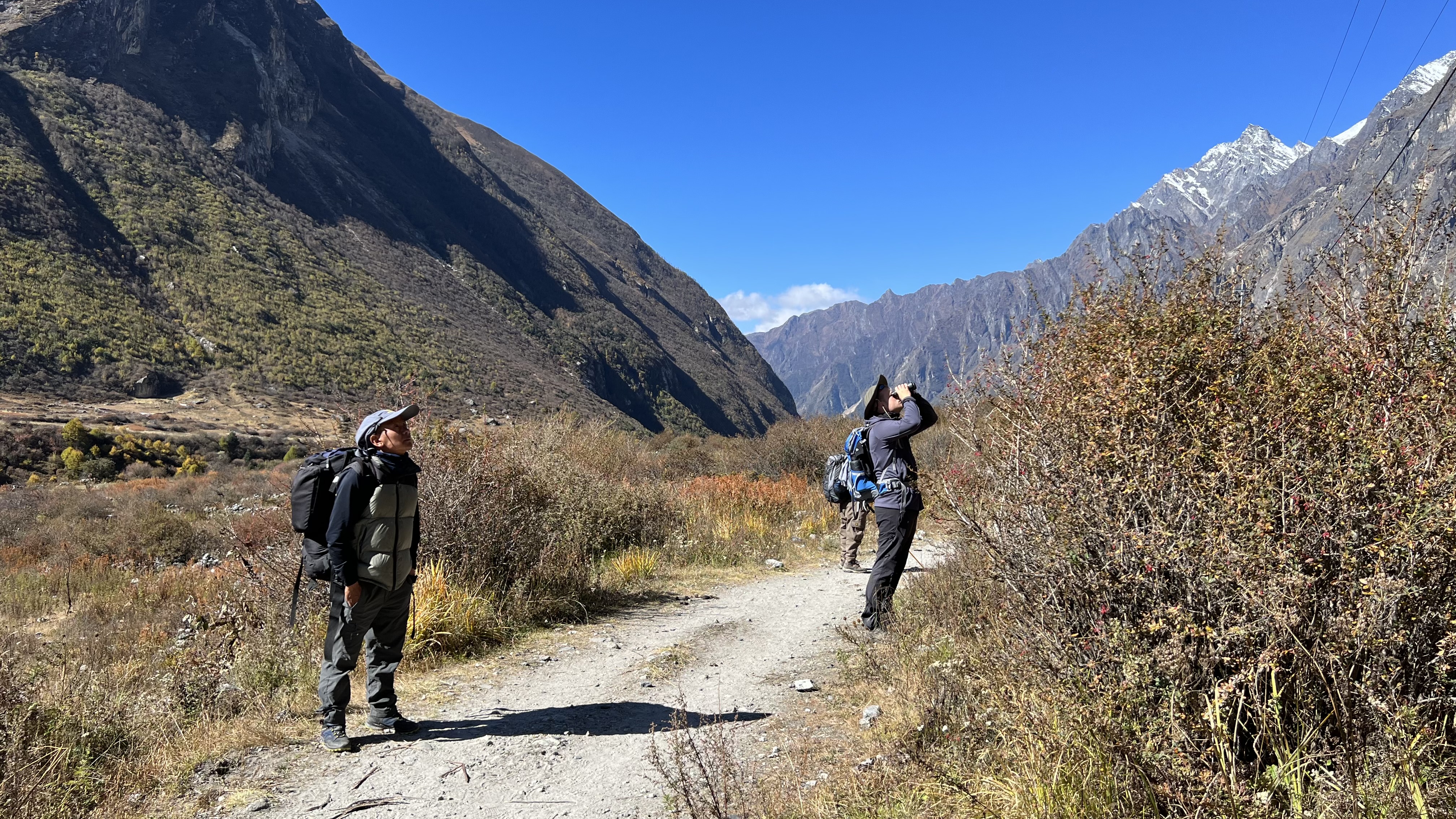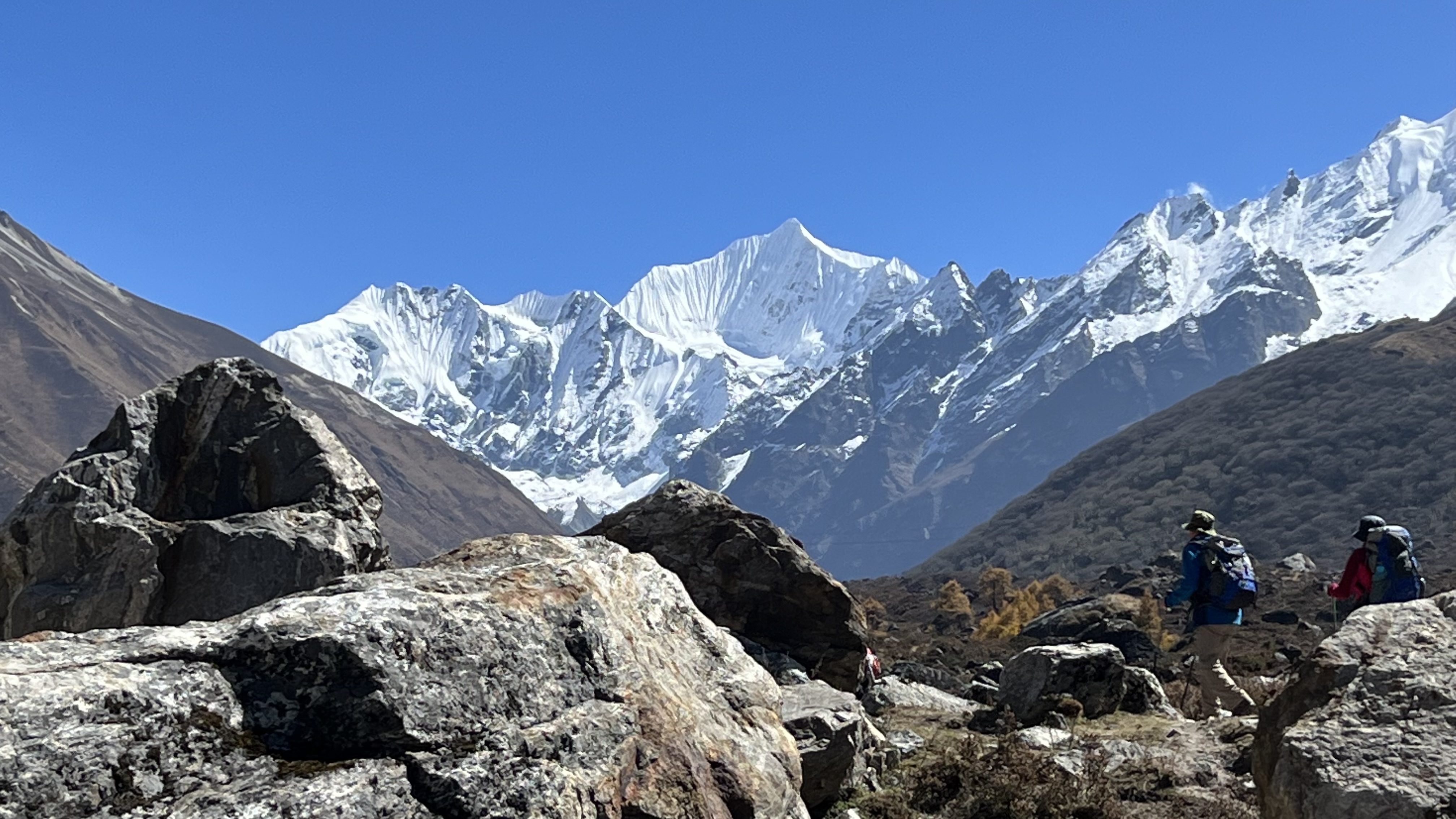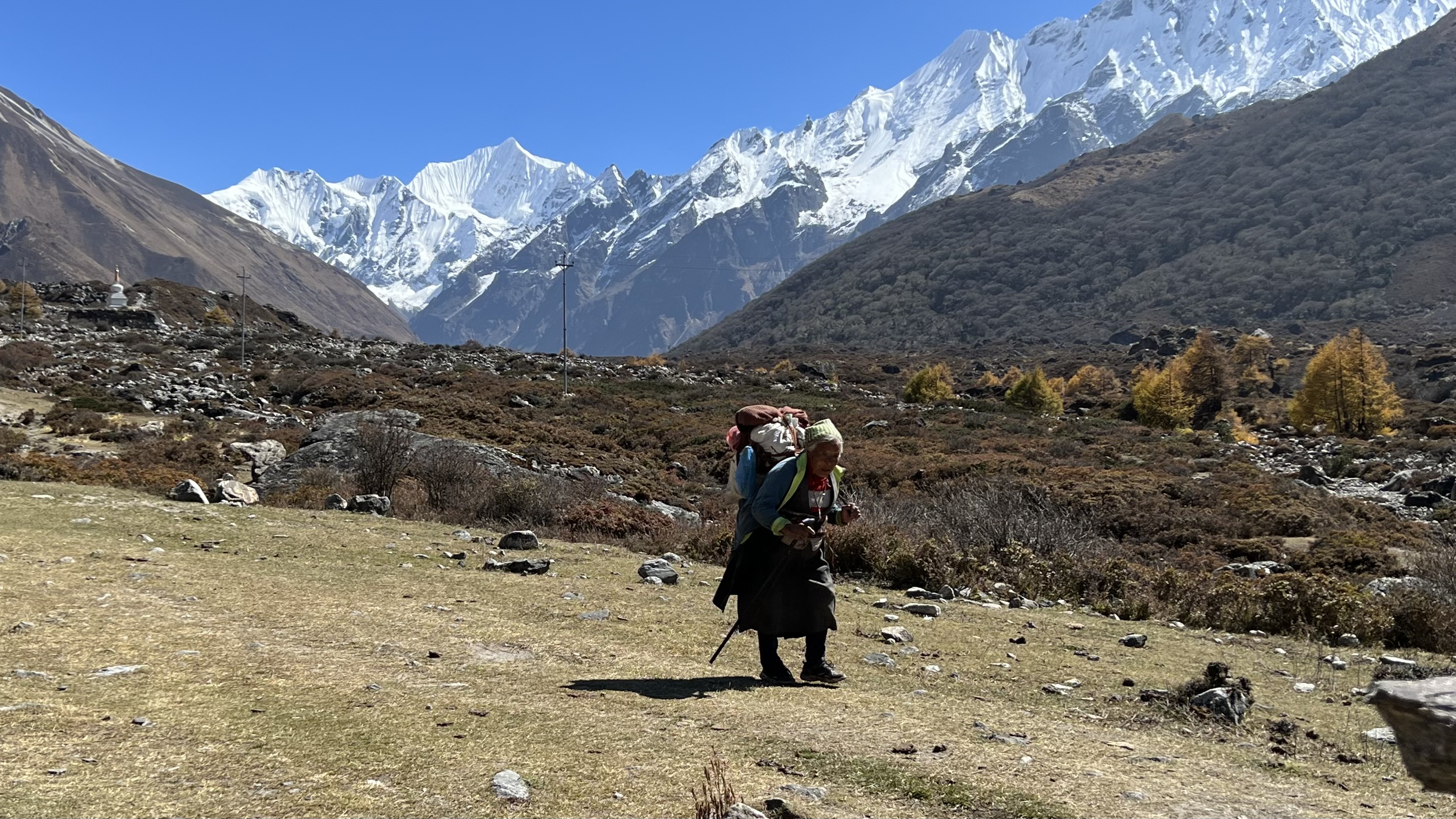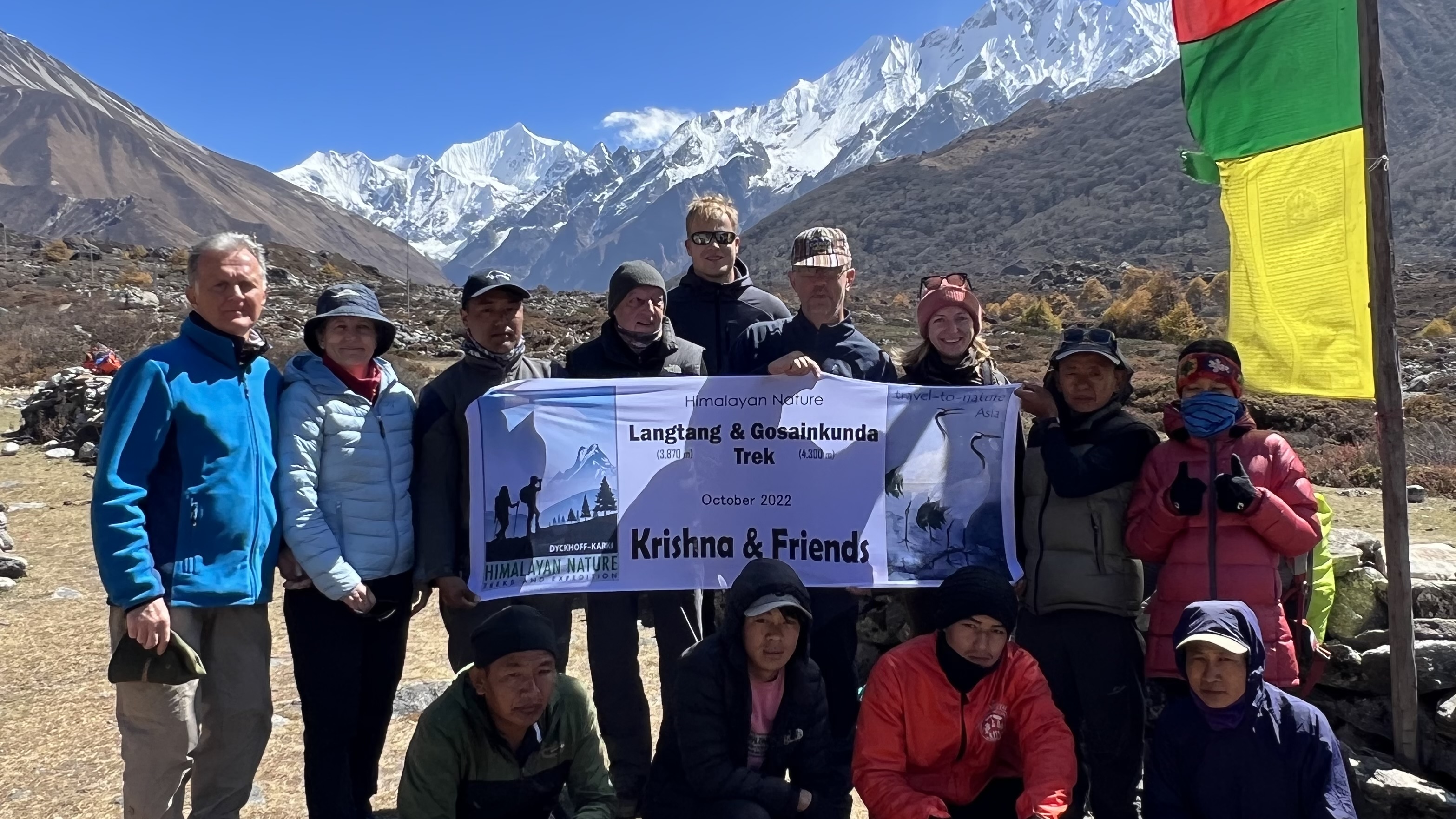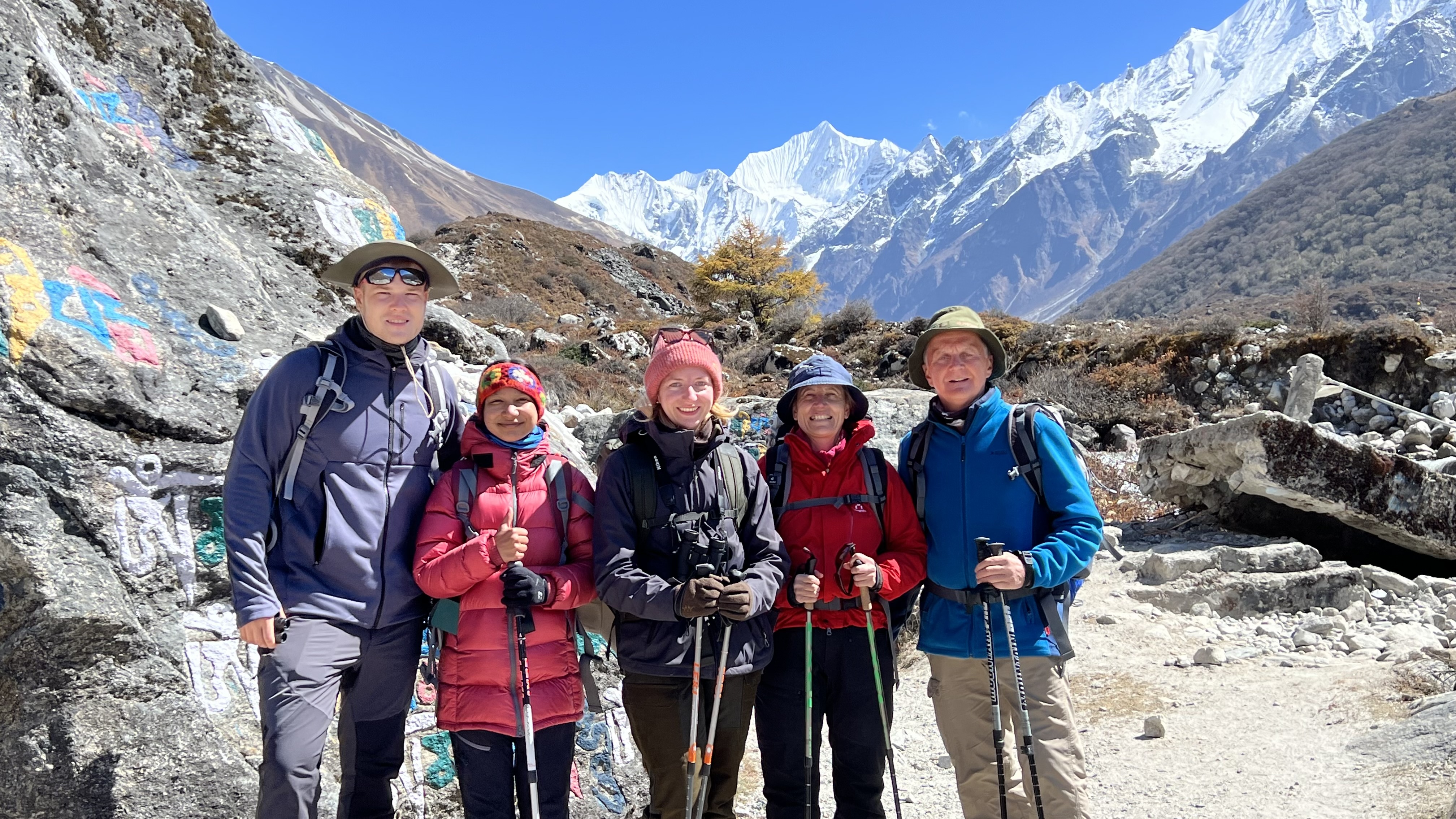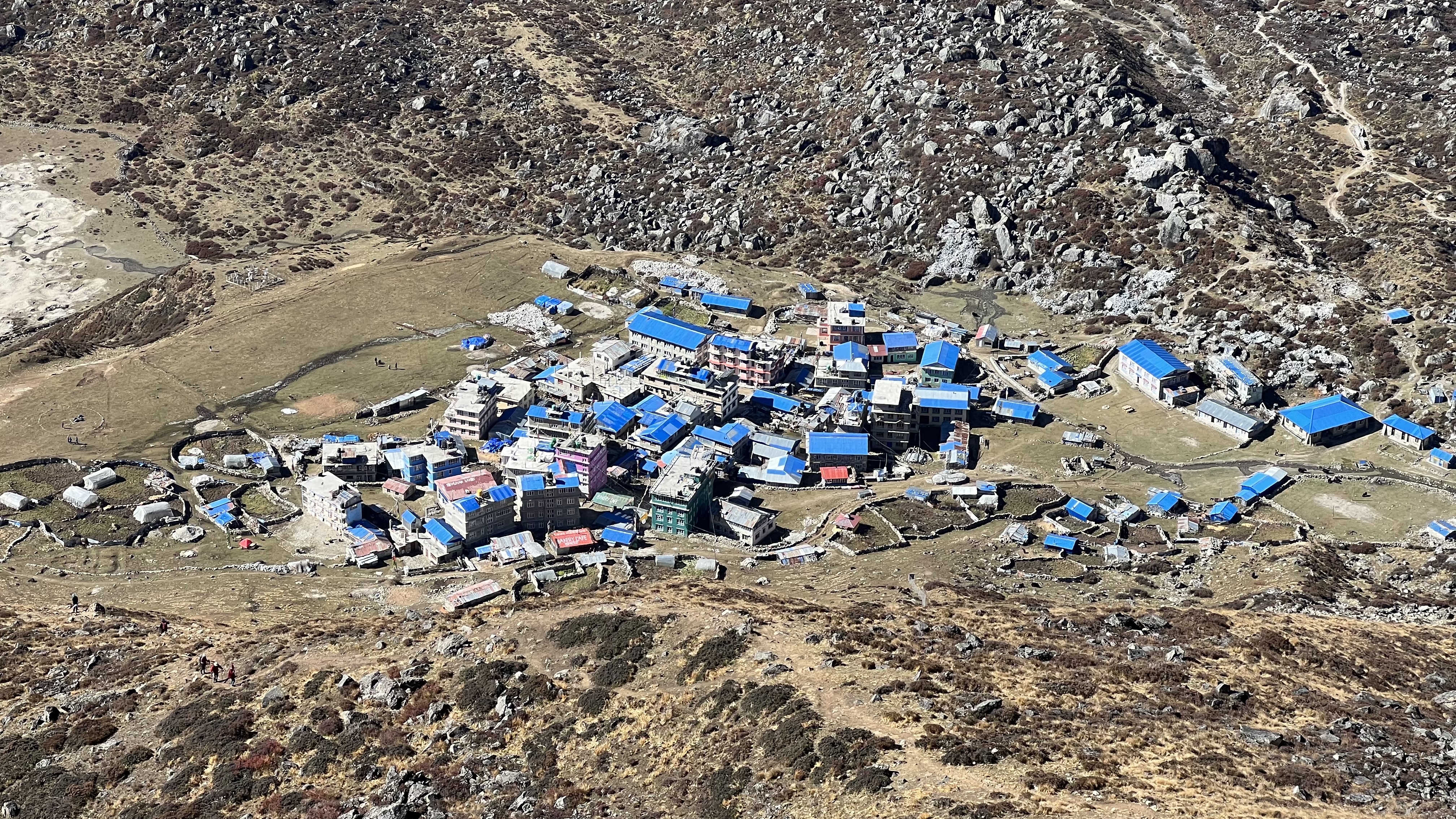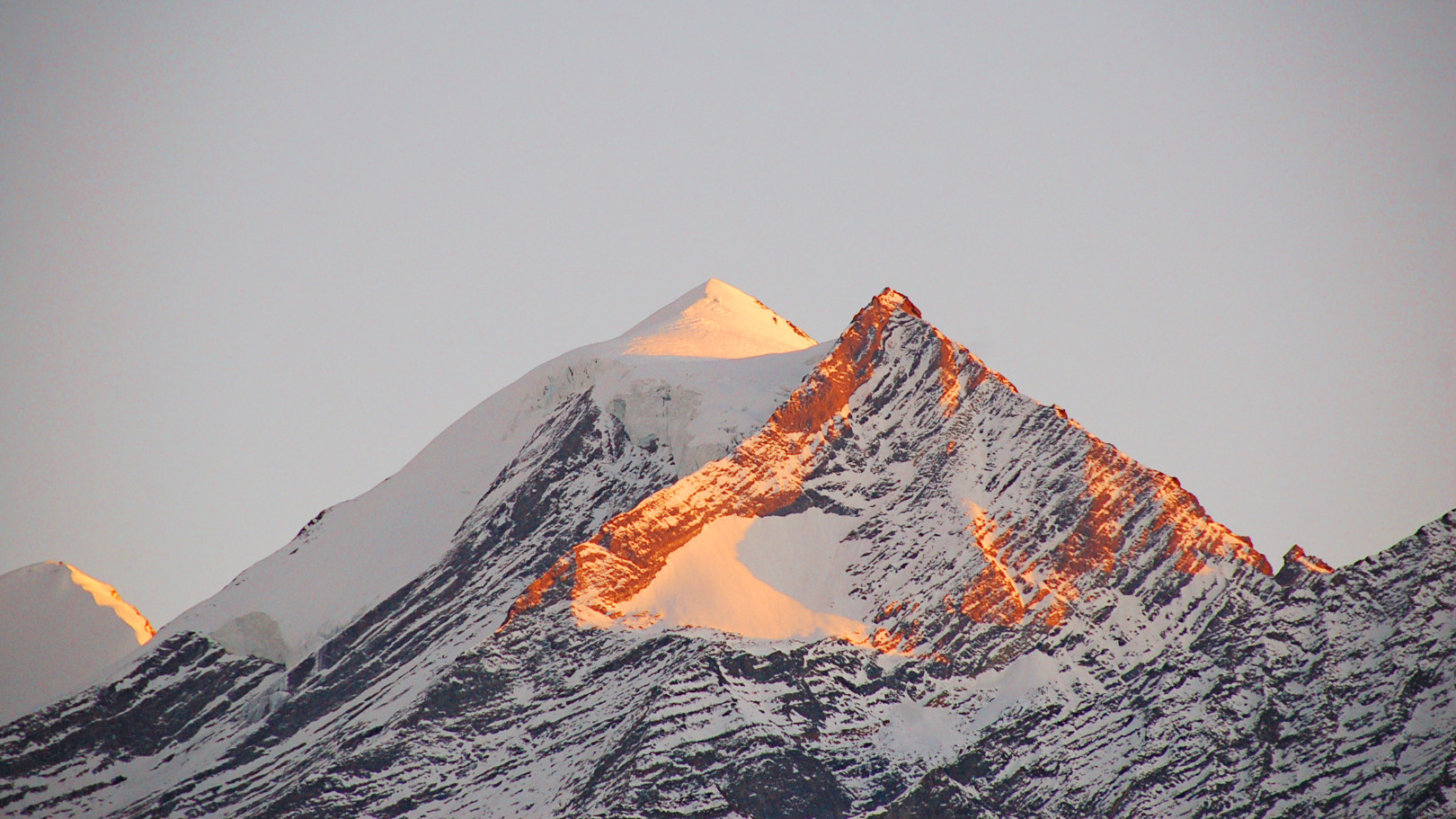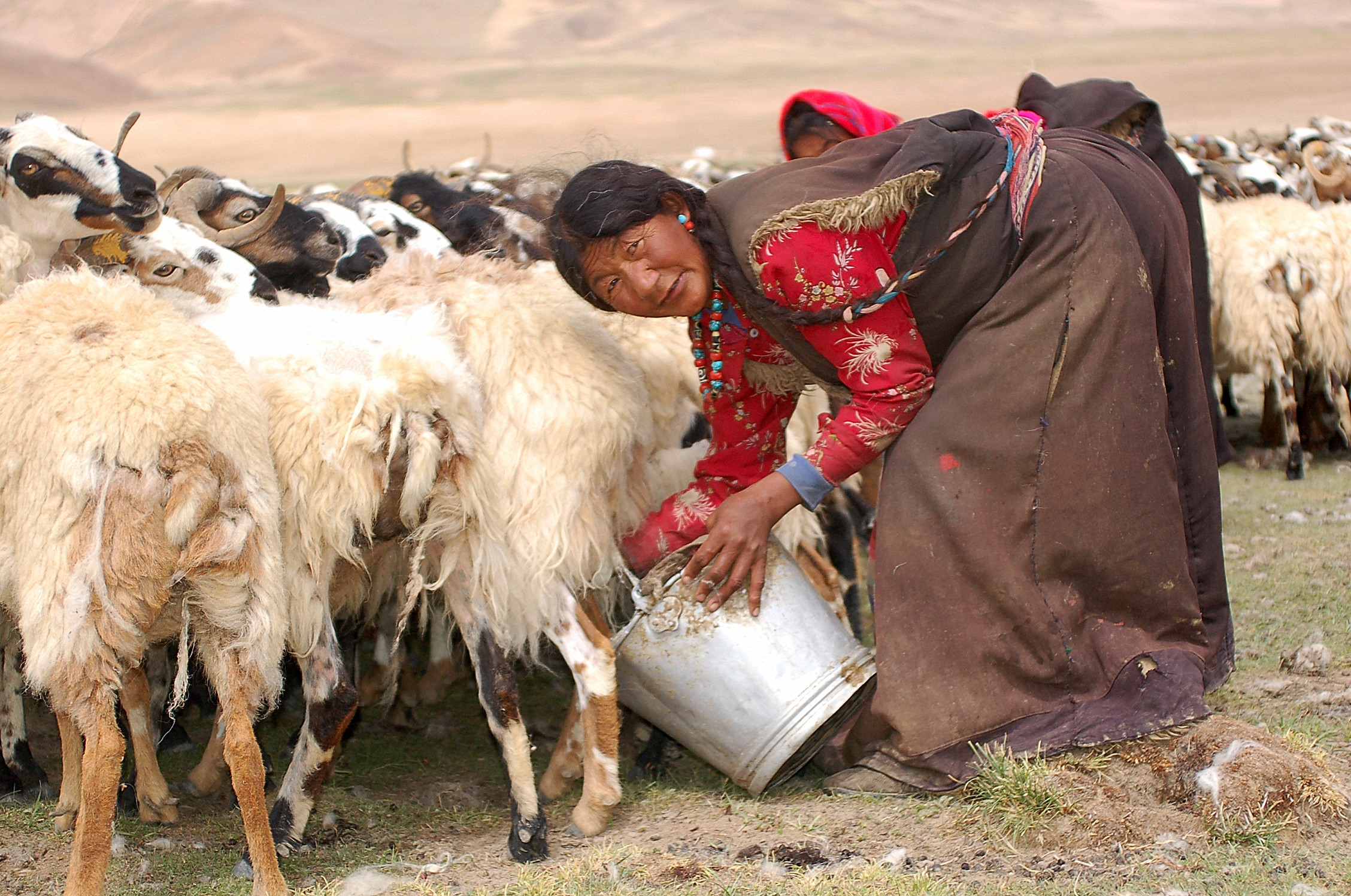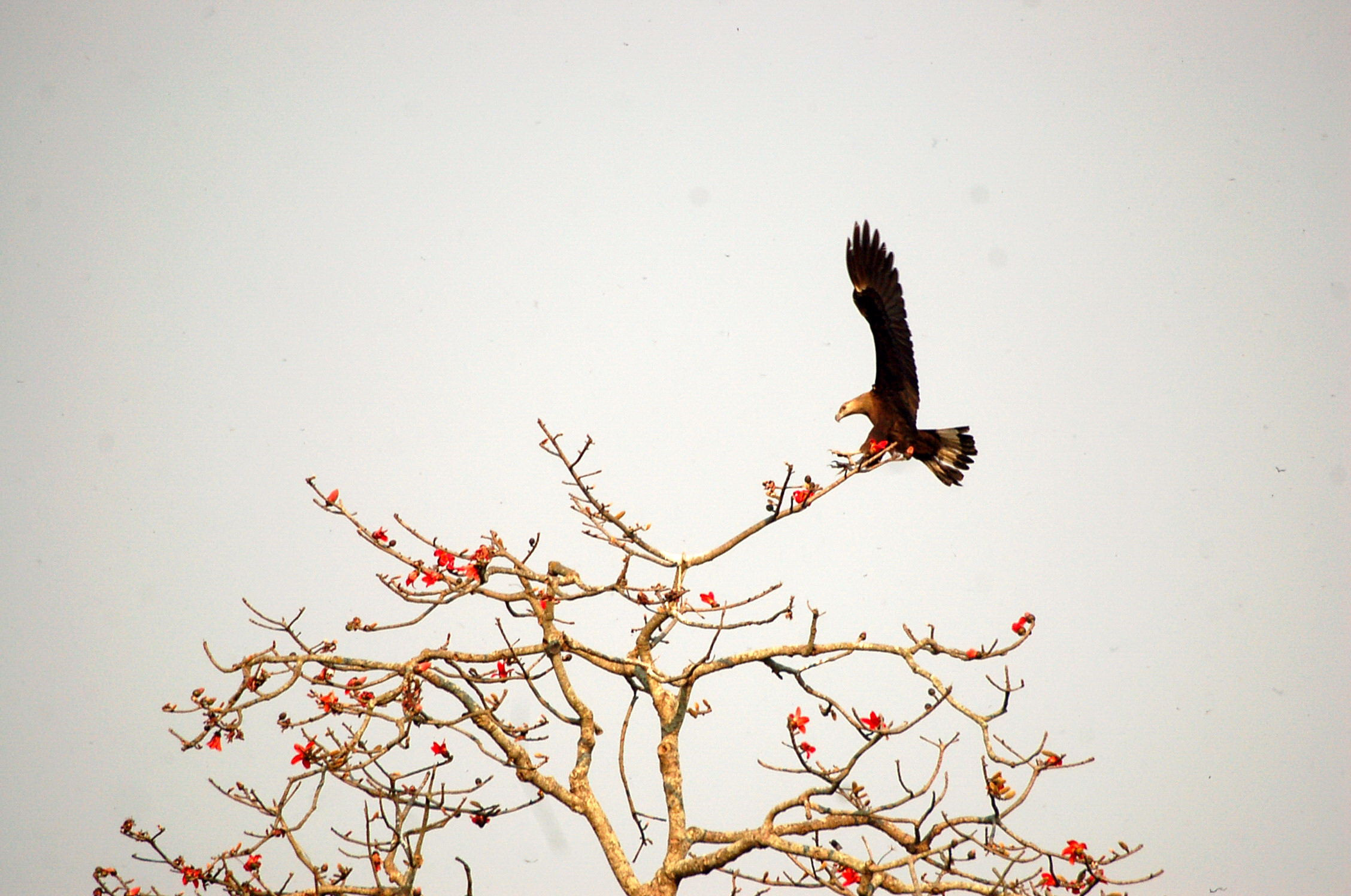Himalayan Nature : Langtang Valley Trek
Highlight
- Katmandu Valley : Unveil the spiritual mysteries of age-old cities of Katmandu Valley
-
Langtang Valley: Step inside and experience life as the “mountain people” live in the Himalaya
- On Himalayan Nature Trek: Trek past bamboo groves, wildflowers, rhododendron forest & exotic wildlife
-
An excellent introduction of Himalyan Nature
- Kyanjin Gompa: Admire the views of 7246m Langtang Lirung while enjoying alfresco plate of ‘yak’ cheese.
Trip Facts
Start & End Point
Kathmandu/Kathmandu
Duration
11 D/10 N
Best Time
Spring,Autum
Grade
Moderate
Activity
Trekking , Culture , Birding
Accomodation
4* star Hotel , Local Lodge/Teahouse
Meals
10 Breakfasts, 8 Lunches, 7 Dinners
Max. Elevation
3,860 m
Itinerary
Welcome to Nepal! Upon arrival in Kathmandu a travel-to-nature Asia guide/representative will be at the airport to greet and take us to our hotel. Please look out for your name-card once you exit out of arrival area.
If you’re not feeling jet-lagged, take some time to explore Kathmandu’s medieval backstreets, discover temples dating back to the 16th century, make your way down to Thamel, the main tourist hub in Kathmandu and a great place to dine. There are myriads of options to choose from like New Orleans Café, Rum Doodle, Bear Garden etc just to name a few. Enjoy your evening and get some rest as the adventure begins tomorrow!

Accommodation
Hotel Manaslu
Meals

Maximum Altitude
1,370 mWeather permitting, we start our day with a scenic Everest mountain flight (optional) over the Himalaya to view Mt. Everest and many eastern ranges of Himalayas. Or begin our morning, visiting Hindu Pashupatinath (UNESCO Heritage site) and its sacred temple complex on the banks of the holy Bagmati river. Here, monkeys run up and down the steps of the burning ghats, and trident-bearing saddhus draped in burnt-orange and saffron sit serenely meditating – when they’re not posing for photos-for-rupees.
Next, the striking Buddha eyes of Boudhanath Stupa (UNESCO Heritage site) watch over a lively and colorful Tibetan community and attract pilgrims from all over the Himalayan Buddhist realm. In the midst of traditional gompas, and hung with long strings of multi-colored prayer flags, Boudhanath attracts Sherpas, Tibetans and tourists alike for daily circumambulations (koras) of the stupa.
For lunch we will drive to Bhaktapur city. Bhaktapur (UNESCO Heritage site) is a home of medieval art and architecture and it is like a living museum. As we walk along its cobblestone streets, notice the many ornately carved windows for which the town is famous. Over dinner we go over our equipment/gear for trek and wildlife Safari and also get to know your trekking guide. Overnight stay in Kathmandu.

Accommodation
Hotel Manaslu
Meals
Breakfast
Maximum Altitude
1,370 mWe make a very early start this morning, driving northwards to the riverside market town of Trishuli Bazaar – a journey of five to six hours by private Jeep. From here we continue on a rough military road which climbs high above the Trishuli River to the hill village of Dhunche and above. We will pass through pretty Tamang villages, steep terraced fields, and watery ravines filled with dense subtropical vegetation and tall alder groves. Moving higher all the time, we enter different zones. Pines replace alders before we reach remnant forests of oaks, rhododendrons and hemlocks. All along the route the views are spectacular. Far below us now flows the Trisuli River; to the west stands snowbound Ganesh Himal, and at the head of the valley lie some of the high peaks of Tibet.

Accommodation
Lodge/Guesthouse
Meals
Breakfast, Lunch, Dinner
Maximum Altitude
1,460 mWe make a very early start this morning, driving northwards to the riverside market town of Trishuli Bazaar – a journey of five to six hours by private Jeep. From here we continue on a rough military road which climbs high above the Trishuli River to the hill village of Dhunche and above. We will pass through pretty Tamang villages, steep terraced fields, and watery ravines filled with dense subtropical vegetation and tall alder groves. Moving higher all the time, we enter different zones. Pines replace alders before we reach remnant forests of oaks, rhododendrons and hemlocks. All along the route the views are spectacular. Far below us now flows the Trisuli River; to the west stands snowbound Ganesh Himal, and at the head of the valley lie some of the high peaks of Tibet.

Accommodation
Lodge/Guesthouse
Meals
Breakfast, Lunch, Dinner
Maximum Altitude
2,380 mWe will spend as much of today as possible walking in the fine forests of the lower Langtang Valley as we continue our trek slowly northwards through the forest, with occasional tantalising glimpses of Langtang Lirung (one of the region’s highest peaks) through the evergreen oak trees,until at last the trail enters open ground at Ghora Tabela (2,987 metres). There was once a Tibetan resettlement project here, but now the only residents are the soldiers of a Nepalese army post.
As we continue we enter different alpine habitat. The locals from lower valley bring their livestock up to graze in the high pastures each summer. Amongst the scrub, boulders and potato fields, as we approach Langtang village. We overnight in a Guesthouse near Langtang (3,307 metres), a village built in Tibetan style which accommodates the headquarters of the National Park and a Buddhist monastery. In the stone-walled fields around the village, potatoes and buckwheat are grown; in the pastures above the village yaks are grazed.

Accommodation
Lodge/Guesthouse
Meals
Breakfast, Lunch, Dinner
Maximum Altitude
3,430Today we will start early, after breakfast, on a morning’s ascent to the village of Kyangjin, situated at 3,798 metres in the Upper Langtang Valley. Beyond Langtang village the valley opens out further and the views become more extensive. To our left is the impressive sight of Langtang Himal, and ahead is the great snow-covered bulk of Ganchempo.By lunch time we should reach the monastery of Kyangjin, set well above the Langtang River and surrounded by snowy peaks. There is a cheese factory here, set up in 1955 with Swiss technical aid. During the summer months large quantities of yak’s cheese are produced, which can be purchased at the factory. We will spend the afternoon exploring and are likely to focus our attention in particular on the spectacular alpine
wilderness. Here, breeding Ibisbills are to be found; whilst the high mountain scenery is stunning, and the peaks and ice-falls all enveloping. We will stay in one of the local Guesthouse, allowing an opportunity to fully appreciate these Himalayan uplands.

Accommodation
Lodge/Guesthouse
Meals
Breakfast, Lunch, Dinner
Maximum Altitude
3,860 mAdmire the views of 7246m Langtang Lirung while enjoying alfresco plate of ‘yak’ cheese. Climb to the viewpoints atop Kyanjin Ri or Tsergi Ri for a spectacular day hike from Kyanjin Gompa.
Based in Kyangjin Gompa, we shall explore the wonderful Langtang Valley. There are several superb posibble day hikes from here. We may consider taking a hike up the Lirung Valley north of the monastery up to the mountain ridge for spectacular views of Langtang Lirung, Kimshung (6781m) and Yansa Tsenji (6575m) peaks on the border with Tibet. We may also encounter high altitude wildlife such Himalayan Thar , Snow cock on the slopes. The other superb high view point in the area we can climb is the Kyangjin Ri viewpoint or Tseko Ri for superb & breathtaking Himalayan scenery including Lantang lirung, Yala peak, Naya khanga etc.
Just north of Hotel Yala Peak is a cheese factory started with Swiss assistance in 1955, where we shall buy some fresh cheese and enjoy the Himalyan delicacy with view of Gabg Chhenpo (6388m) head of the Valley.

Accommodation
Lodge/Guesthouse
Meals
Breakfast, Lunch, Dinner
Maximum Altitude
3,870 mAfter spending time during the first part of the morning in further exploration of the alpine habitiats around Kyangjin, we will begin our descent to Ghoda Tabela around mid-morning. During the rest of the day, as we walk back down the Langtang Valley again, we will be able to enjoy the local people, birds and flowers we have now come to know and be alert for new ones! We look for a Teahouse nearby for overnight.

Accommodation
Lodge/Guesthouse
Meals
Breakfast, Lunch, Dinner
Maximum Altitude
2,900 mThis morning we will rise early in order to descend to Bharkhu. Here our Vehicle will bewaiting for us, and we will spend much of the rest of the day driving back to Kathmandu. Back in the Hotel, a hot shower will be most welcome, as will that long- awaited restaurant meal!

Accommodation
Hotel Yak & Yeti
Meals
Breakfast
Maximum Altitude
1,370 mDepending upon your flight schedule we sadly send you off to the airport for your scheduled international service flight to your return journey back home
If your return flight is in the evening you may consider visiting one of the ancient cities.
As in Katmandu, the Patan Durbar Square (UNESCO Heritage site) , is the ancient Royal Palace of Patan faces on to a royal square and this concentrated mass of temples and the most visually stunning display of Newari architecture to be seen in Nepal.

Accommodation
Hotel Manaslu
Meals
Breakfast
Maximum Altitude
1,370 mTour Extension
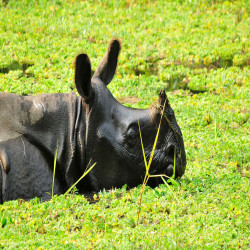
Chitwan National Park
Chitwan National Park

Explore Nepal wilderness – After our breakfast, we meet with our naturalist Guide for a full day jeep safari in the national park to get a real taste of the jungle. Do not hesitate to ask questions. Their naturalist are extremely knowledgeable on the animals and the history of Chitwan National Park. During the safari we will encounter wildlife such as different species deer, birds , monkeys , and the endangered one – horned rhinoceros and hopefully the elusive Royal Bengal Tiger.
Day-to-day Itinerary:
Day 1: Arrive Kathmandu (ex Langtang Trek). Trasnfer to hotel. Overnight in Shanker Hotel 4*
Day 2: Transfer to domestic airport and fly to Bharatpur. Transer to hotel. Overnight in Jungle Villa Resort.
Day 3: Jungle activities in Chitwan National Park. Overnight in Jungle Villa Resort.
Day 4: Transfer to Bharatpur airport and fly to Kathmandu. Transfer to your hotel. Overnight in Shanker Hotel 4*
Day 5: Transfer to airport for your homeward bound flight.
Price: US$ 597 per person (minimum 2 person on sharing basis)
Extra Domestic Airfare: US$ 260
Cost Includes:
- Airport transfers
- Accommodation in sharing basis
- Daily breakast in Kathmandu, all meals (breakfast, lunch, dinner) while in Chitwan
- 2 nights 3 days jungle package in Chitwan National Park
- National park entrance fee,
- Naturalist guide
- Applicable govermnent taxes
Date & Cost
Price: US$ 1,430 per person (Twin Sharing | Based on Minimum 4 Travelers)
Single Supplement: US$ 125
Include
- Arrival & departure airport transfers
- Accommodation on twin sharing basis with daily breakfast
- Guided city tour in Kathmandu valley by private tourist vehicle, including entry fees to all monuments
- All standard meals (Breakfasts, Lunches and Dinners) during the trek
- Portterage of Baggage's at Hotels & Airports While on trek we provide accommodation at local Guesthouse/Lodge with all meals with 2-4 participants in one room depending upon the availability on the spot
- Porters, trekking guide and one or two assistance Sherpas depending up on the group size.
- Trekking Permit & TIMS card fees
- National Park Entry permit Fees
- Comprrhensive Trekking Map and other necessary gear for high land trekking/climbing peaks if required
- Free mobile phone service for emergency calls
Exclude
- International flights
- Visa fee
- Visa fee
- Meals not mentioned in the itinerary
- Personal clothing & equipment
- Tips for tour leader/guide, driver, hotel staff and porters
- Items of personal nature such as alcoholic beverages, soft drinks, laundry, showers and other unforeseen expenses
- Any item/service not mentioned under "included"
Gallery
Map
Frequently Asked Questions
The Langtang Valley Trek offers some of Nepal's finest alpine scenery, tranquil landscapes, and unique Himalayan nature and culture. You’ll trek through pristine rhododendron forests, spot rare wildlife like the Red Panda and Musk Deer, and experience breathtaking mountain views away from the crowded trails of the Annapurna and Everest regions.
This trek is moderately challenging, suitable for individuals with a reasonable fitness level. Daily hikes range from 5 to 7 hours, with some steep ascents and descents. Proper preparation, including training for trekking at altitude, is recommended.
Yes, the Langtang Valley Trek can be suitable for beginners with a decent fitness level and determination. It is a shorter trek compared to others in Nepal, but prior trekking experience or preparation will be beneficial.
The ideal times for the Langtang Valley Trek are during the spring (March to May) and autumn (September to November). These seasons offer clear skies, vibrant alpine flowers, and pleasant trekking conditions.
Langtang Valley is home to a variety of wildlife, including Musk Deer, Red Panda, Blood Pheasants, and Himalayan Thar. Keep your eyes open for these rare species while trekking through the forests.
Yes, you’ll need a Langtang National Park Permit and a TIMS (Trekkers' Information Management System) card. These permits are included in our package and will be arranged for you.
Absolutely! We can tailor the trek to suit your preferences, including adding extra days for exploration or combining it with other treks or activities in Nepal.
